Warszawa II (21 page)
Authors: Norbert Bacyk

On September 13, at 1000 hours, the Soviet and Polish forces resumed the assault. It began with street battles in Praga. General Wojciech Bewziuk now despatched tanks from the 1st Tank Brigade “The Wester-Plains heroes” to the 1st Infantry Division's assistance. (the order issued by the commander of the 1st Tank Brigade at 1100 hours indicates that the 2nd Tank Battalion and the 1st and 2nd Batteries equipped with SU-85 assault-guns from the 13th Artillery Regiment were sent into battle). After an entire day of hard fighting against a Kampfgruppe drawn from the 19th Panzer-Division. the 175th Rifle Division succeeded in taking control over the southern part of the city's sectors of Saska KÄpa, GocÅawek in Grochów, which prompted the Germans to blow up the Poniatowski Bridge and also to destroy, somewhat prematurely, a railway-bridge. The Polish troops fought in Targówek and reached the area around the East and the Wilno rail stations, and continued the offensive in the direction of the Kierbedź Bridge. Meanwhile, as this was unfolding, the 76th Rifle Division became engaged in intensive fighting with the main force of the 19th Panzer-Division, between Targówek and Zacisze. The German division launched several counterattacks in the Zacisze area attempting to outflank the 125th Rifle Corps storming the buildings of Praga. But in the end, the Germans were forced to give way to Soviet pressure, particularly as during the course of that afternoon the 77th Rifle Corps' infantry, and tanks from the 8th Guards Tank Corps, had positioned themselves in the neighbouring Zabki-Zeilonka zone.
Defending the city with only one panzer division was, for all practical purposes, an impossibility. The Germans were short infantry sufficient to man all their positions; even though the German Field Police placed the newly trained 73rd Infantry Division's small units into battle, while the command of the 9thArmy sent what remained of the Panzer-Jäger-Bataillon 475, plus a number of security and training battalions. Clearly, these measures were of doubtful significance when compared with the massive combat forces storming Praga. General von Vormann informed the staff of Heeresgruppe “Mitte” about the situation at Praga, and on September 13, he received permission to withdraw from the centre toward the northern suburbs. The 19th Panzer-Division, remnants of the 73rd Infantry-Division and the Hungarian 1st Cavalry Division were now to form a new defence line from Brudno to Marki. Immediately after this had been organized, the IV SS-Panzer-Corps was instructed to send the Hungarian division to the reserve forces. This order was dictated by the plan to send all in-country Hungarian troops to Hungary. Instead of retaining the weak (Hungarian) cavalry, the plan was to send a Kampfgruppe from the 25th Panzer-Division under the command of Colonel Oskar Audörsch; a formation which had been previously earmarked for combat operations outside PuÅtusk. In an effort to neutralise possible Soviet or Polish landing-forces from crossing to the WisÅa's western shore; the German command decided to deploy an elite unit, Fallschirm-Pz. Gren.Rgt.2 “Hermann Göring” (from Magnuszew) to Warsaw.
The Soviet armoured train “Ilja Muromjets” from Gorkij's 31st special armoured troops formation fire on German positions from the station in Anin. September 1944. (WAF)
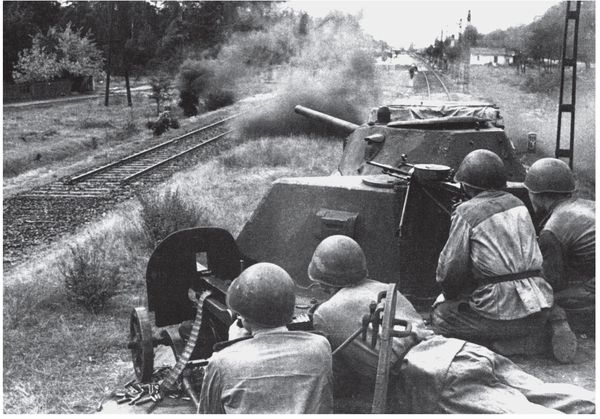
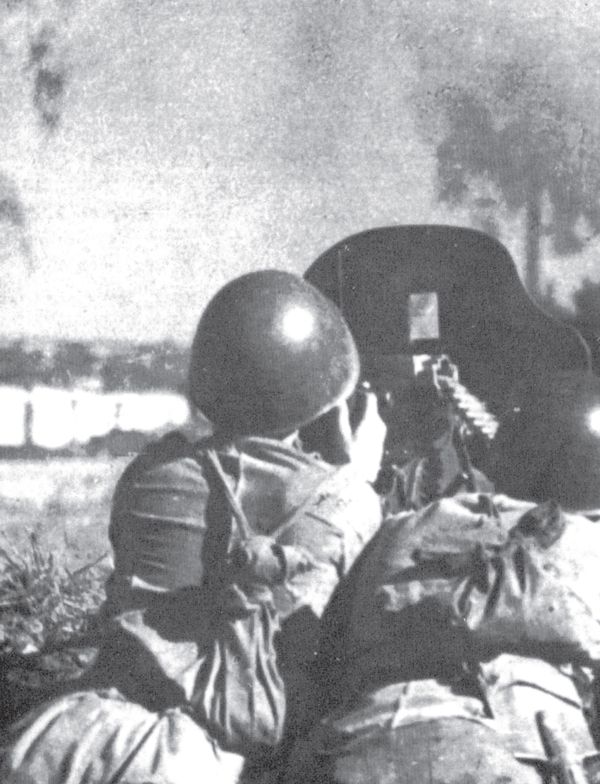
The Polish Maksim machinegun (model 1910) from the 1st Infantry Division's position in Anin, September 1944. (WAF)
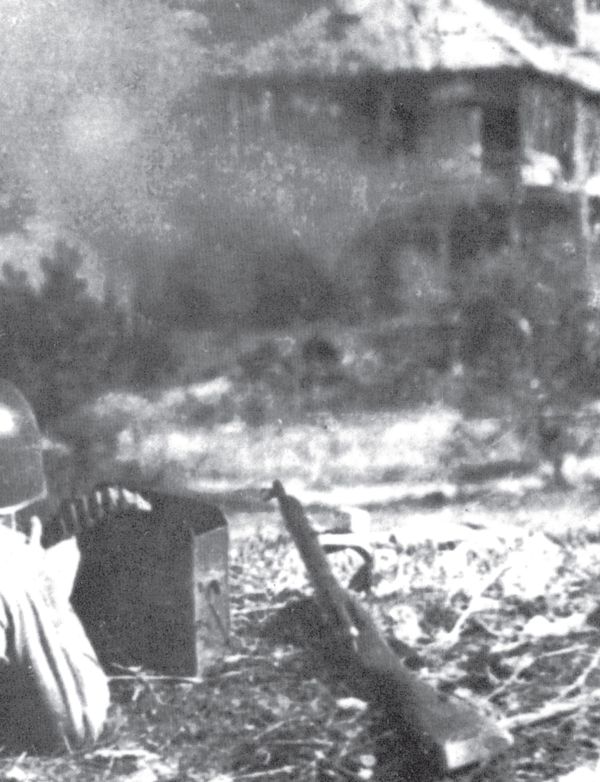
On September 14, large sections of Praga had been liberated. During the night, the retreating Germans had blown up the Kierbedź-Bridge and the railway bridge at Cytadela. At 0500 hours, the 1st Infantry Division's 2nd Infantry Regiment had control of the Wilno rail station. Intense fighting developed around the bridgeheads, especially in the zoological garden and in the field in front of the railway bridge where the fighting continued to rage throughout most of the following day. In the evening, the IV SS-Panzer-Corps units, which up until then had been defending the city, took up positions along the Bródno â Stare Bródno â Marki line. In the vicinity of Marki, the 3rd SS-Panzer-Division “Totenkopf” had already taken command of the front. The situation for Gille's corps became critical since all the corps within the 47th and 70thArmies had joined in the combat operations. In an effort to save the situation outside Praga, combat battalions from the Waffen-SS panzer divisions were dispatched there with the thought they would reinforce the Hungarian units or the 19th Panzer-Division. On the morning of September 15, with the support of heavy artillery and massive air assaults by planes from the 2nd and 11th Air- assault Divisions; the Soviet 70th Army, and the 96th Rifle Corps beat the 5th SS-Panzer-Division “Wiking” back from BiaÅobrzegi to NieporÄt, which at the same time allowed these attacking forces to reach as far as the village of Aleksandrów. With the position at SÅupno having been outflanked, SS-Gruppenführer Gille was forced to also order the 3rd SS-Panzer-Division “Totenkopf” to withdraw. The troops from this division, who had been in continuous combat with the 114th Rifle Corps, relinquished NieporÄt-Forest and retired across the Królewski Canal in the vicinity of StanisÅawów (which in 1963, after having been deepened and broadened became part of the Å»eraÅski Canal). Soldiers from the 3rd SS-Panzer-Division “Totenkopf” were also fighting against the 129th Rifle Corps from the 47th Army. And on September 15, three rifle divisions from this corps managed to gain control of the Czarna Struga and Struga Rivers, and at Marki made contact with the 77th Rifle Corps' 185th Rifle Division. The Germans withdrew towards the north with the intent of shortening their frontline. By evening, the 125th Rifle Corps and the 77th Rifle Corps along with the 8th Guards Tank Corps had occupied the districts of Bródno, Stare Bródno, Annopol, Å»eraÅ, BiaÅoÅÄka and Marki. It wasn't until darkness began to fall that their assault was finally neutralized by counterattacks launched by Kampfgruppe from the 19th Panzer-Division and the 3rd SS-Panzer-Division “Totenkopf.”
The Polish 12.2 calibre howitzer, model 1938, from the 1st Light Artillery Regiment, 1st Infantry Division, shelling German positions in Praga, September 1944. (WAF)
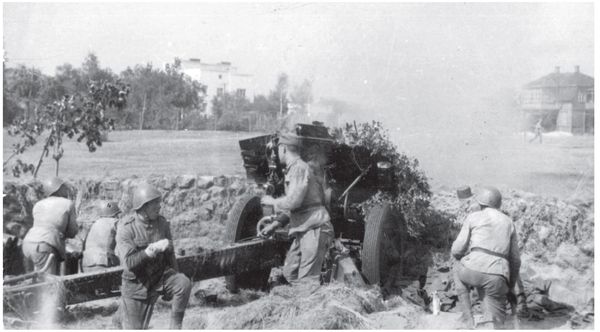
By September the 15, Praga was already cleared of German forces. Between the days of September 10 and 15, the Polish 1st Infantry Division, which had participated in the liberation of the city, suffered the following losses: 353 dead, 1,406 wounded and 109 missing in action (MIA.). The official operational report for September 16 lists enemy losses caused by the Polish 1st Infantry Division and its support troops, i.e. the 1st Polish Volunteer Army, as 8 dead officers, 41 non-commissioned officers and 564 soldiers. One officer, 25 NCO's and 59 soldiers had been taken prisoner â 33 rifles, 2 sub-machine guns, 16 light machineguns, 18 machineguns, 7 mortars, 16 artillery guns, 19 tanks, 4 armoured vehicles, and 16 other vehicles had been destroyed. Captured war material included: over 200 rifles, 15 sub-machineguns, 5 light machineguns, 1 mortar, 25 guns, (mainly 10.5 howitzers from the decimated Artillery-Regiment 173 from the 73rd Infantery-Division), plus 1 motorcycle, and 1 radio transmitter. The division's successes were reflected in order No. 25 formulated by the Polish army's chief commander, General MichaÅ Rola-Å»ymerski, on September 15, in which he wrote among other things:
An M4A2 tank from one of the independent tank units in the battle for Praga, September 1944. Note the small bridge parts on the side of the vehicle. (Leandoer & Ekholm archive)

“Soldiers!
The Tadeusz KoÅciuszk-Division has, together with our brothers from the Red Army, in the early morning of September 14th, by means of storming, captured an entire suburb of our city â Praga, [â¦] On the other side of the WisÅa, in bloody flames of fire, there burn entire districts of our capital city. In Warsaw everyone is struggling [â¦] They fight and curse the London-based government for this premature uprising.”
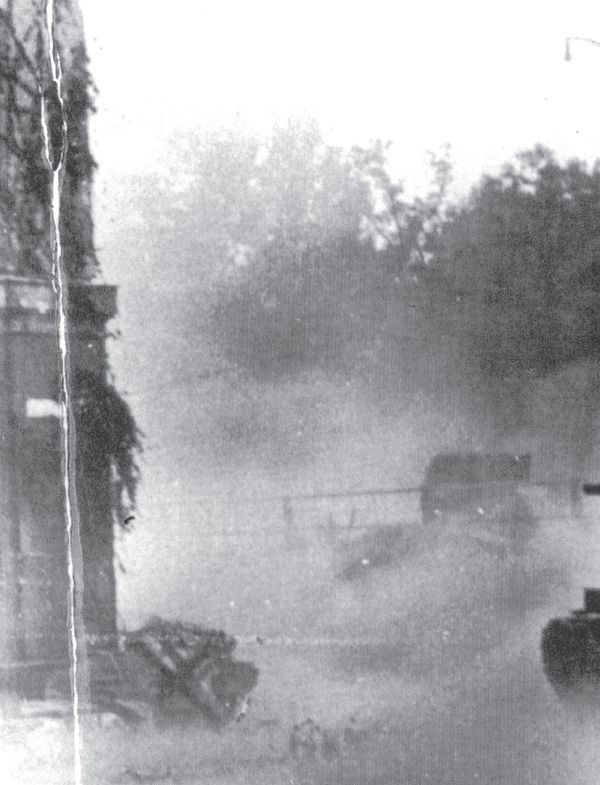
A Polish T-34 tank from the 2nd Battalion, 1st Tank-Brigade, assists attacking soldiers from the 1st Infantry Division in Praga, September, 1944. (WAF).